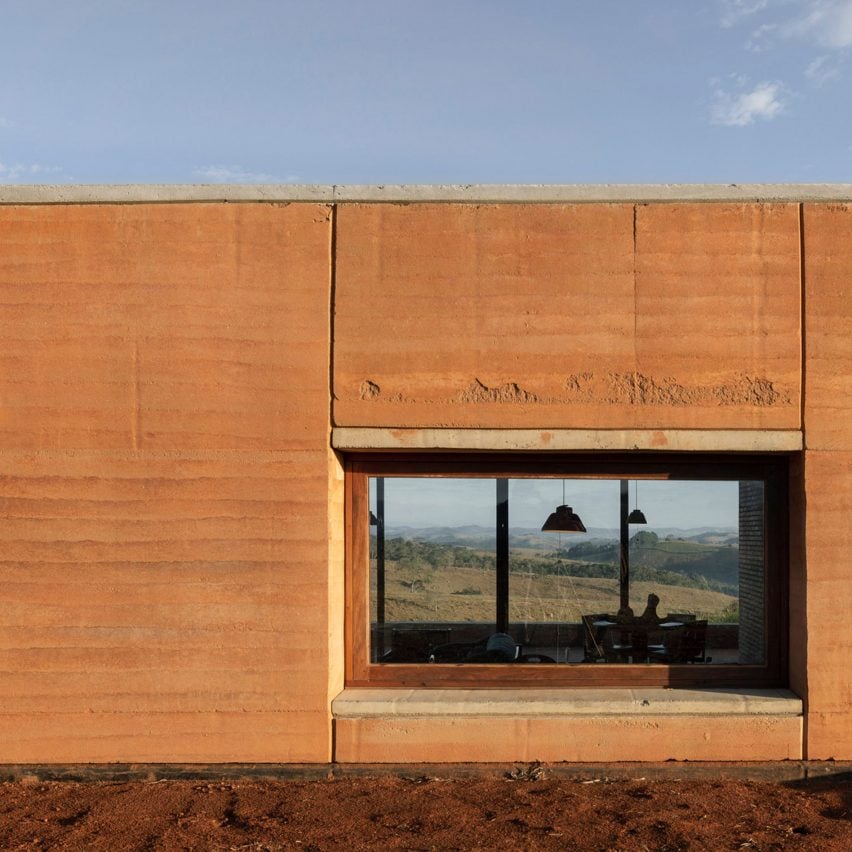Cement-based rammed earth "not much better than concrete"

Rammed earth is often celebrated as a low-carbon method of constructing buildings, but some experts are beginning to cast doubt on its sustainability credentials. Amy Peacock reports.
"People are using rammed earth to sell something that is essentially concrete," said Rowland Keable, CEO of the charity Earth Building UK and Ireland and founder of Rammed Earth Consulting.
"I've seen, in the UK, rammed-earth projects going into the glossy architecture mags and you think, 'wow, that's a beautiful looking building'," added Tim Coleridge, MSc Sustainability and Adaptation programmes leader at the Centre for Alternative Technology (CAT).
"But [we're] not talking about the cement that's gone into making that possible." Top: rammed-earth walls are formed by compressing soil in formwork. Photo by Federico Cairoli. Above: Elliot Wood added cement to the rammed earth at Bushey Cemetery
Rammed earth is a building method where soil, made up of a combination of aggregate, sand, silt, clay and gravel, is packed into formwork and compressed, leaving a solid wall when the formwork is removed.
Sometimes it is constructed in its raw form, but often it is stabilised with a binder, such as cement, to improve its strength and durability.
The ratio of cement in rammed-earth construction varies, but some experts claim it can be comparable to the amounts used in concrete, which is widely considered to be one of the most environmentally harmful building materials.
Cemen...
| -------------------------------- |
| 360-degree video reveals the EU-blue amphitheatre inside the Belgian Pavilion |
|
|
Villa M by Pierattelli Architetture Modernizes 1950s Florence Estate
31-10-2024 07:22 - (
Architecture )
Kent Avenue Penthouse Merges Industrial and Minimalist Styles
31-10-2024 07:22 - (
Architecture )






